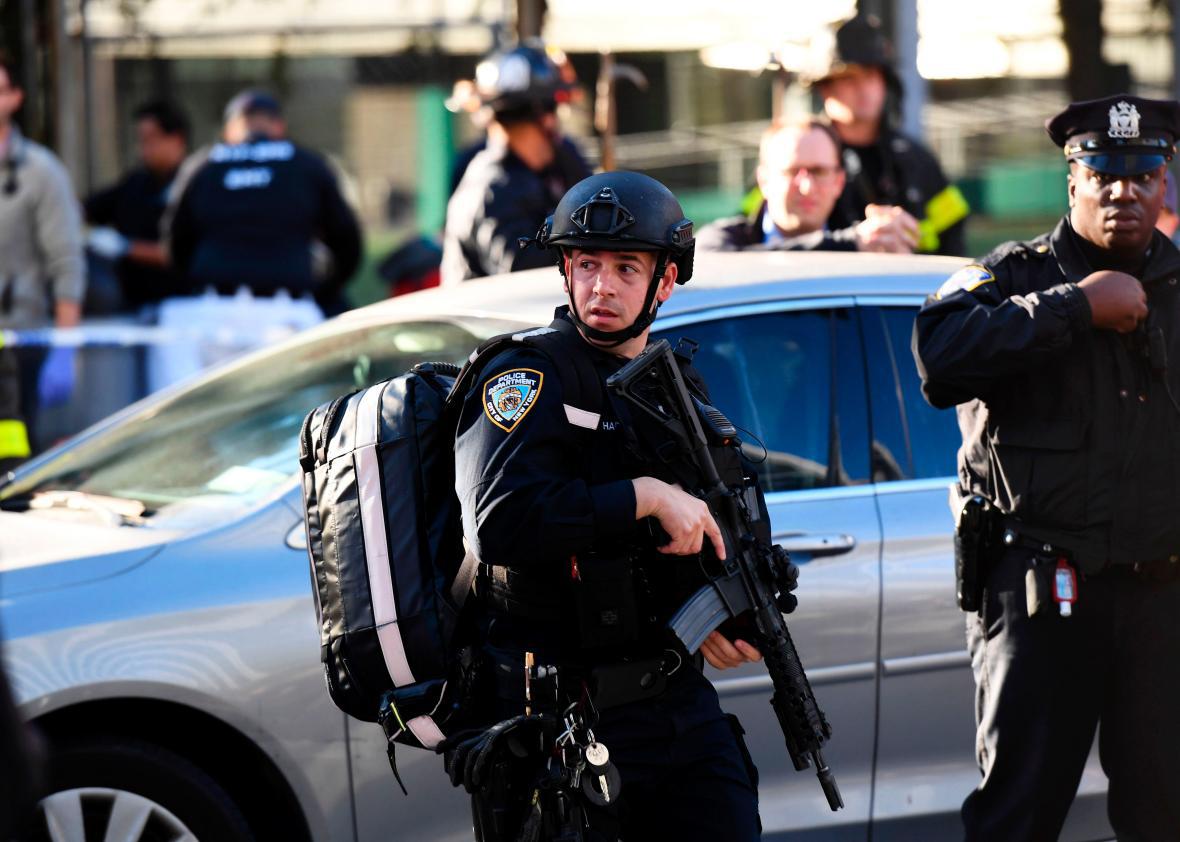Though there has not yet been an official claim of responsibility, the perpetrator of Tuesday’s deadly car attack in New York appears to have been motivated by loyalty to ISIS, and the group’s supporters have celebrated the attack online. But disturbing as it was, will the event have the same political impact as previous incidents involving ISIS? By continually staking claim to big and small terrorist attacks, regardless of target selection or casualty count, ISIS has attempted to instill a sense of omnipresent and unpredictable danger. And in the process, terrorism fatigue may be setting in around the world.
The quest to organize and inspire a steady stream of attacks in the West comes with a cost. It can make the outrageous seem relatively normal. People become numb to the violence. As the once-shocking violence becomes normalized, they are no longer able to muster the requisite outrage or compassion to respond.
And so the grotesque tally continues, with ISIS taking credit even where none may be due. For instance, take three separate attacks that occurred on the first weekend in October in Canada, France, and the United States. A refugee from Somalia known for espousing extremist ideology attacked people in Alberta with a knife and a vehicle. An assailant stabbed and killed two women at a train station in Marseille. In Las Vegas, a lone gunman with no known connections to ISIS perpetrated the deadliest mass shooting in modern U.S. history—and ISIS claimed responsibility for it.
ISIS seems to be following a “kitchen sink approach” in staking claim to attacks. The group will just as readily claim responsibility for the devastating attack at the Bataclan in Paris in November 2015 as it will a simple knife attack that injures only a police officer. The ISIS strategy is one of attrition—continue to maintain a high operational tempo of attacks throughout the globe, but especially in the West, to make the threat of terrorism seem ubiquitous. According to the Institute for the Study of War, 54 attempted terrorist attacks have been linked to the Islamic State in Europe this year.
The common assumption is that more terrorism inevitably means people are more terrified, but some research suggests the opposite. In essence, individuals find ways to integrate and normalize some violence as part of their life, and make strategic choices to navigate threats. This is true regardless of whether we are talking about bar fights, gang-affected neighborhoods, or terrorism. We avoid some gathering places and steer clear of certain neighborhoods after dark, and these insights become points of resilience for everyday people who factor in whom and what to avoid throughout their day.
The Islamic State’s strategy is not geared toward negotiating some lasting political solution, but to exacting ongoing revenge, polarizing societies to exacerbate divisions, and goading governments into overreacting, ultimately helping terrorists recruit more effectively while also confirming existing narratives that the West is at war with Islam. When the Trump administration instituted a travel ban on seven Muslim-majority nations early this year, it helped reinforce the message at the core of the Islamic State’s recruitment pitch that Muslims everywhere are victims and ISIS is the defender and vanguard of the faith. (Trump was also quick to tweet about the need to not allow ISIS “to return, or enter, our country” in the immediate aftermath of the New York attack.)
These overreactions are counterproductive and only aid an ISIS strategy that is losing its effectiveness. Social movements and militant organizations whose activities are, over time, met with collective indifference often choose to escalate their actions to recapture attention and stay in the media spotlight. As Grant Wardlaw points out in his book on political terrorism, repeated attacks by any particular group will eventually result in societal indifference. A more spectacular attack breaks the cycle of repetition and is more likely to shatter our sense of security. As William Gamson, a respected scholar of social movements, wrote long ago: “The unpredictable and the spontaneous make better television,” and groups are “tempted to ever more extravagant and dramatic actions” to maintain media attention.
As early as the 1970s, terrorism expert Brian Michael Jenkins wrote “terrorism is theater.” This remains all too true, but given the around-the-clock media coverage of even the minutiae of terrorism-related events, it now takes either massive casualty counts or violence far beyond the pale to attract and maintain consistent media coverage. After all, the main purpose of terrorism is to communicate a political message to the widest possible audience.
Tuesday’s vehicle attack in New York City was another example of a crude attempt to wreak havoc and sow terror in the West. The attack proves that New York City will remain high atop the terrorists’ list of priority targets and that they are willing to settle for simple, yet opportunistic attacks, rather than holding out until they might be able to plot a more coordinated, spectacular attack.
But what message is sent when carefully orchestrated brutality gives way to pedestrian acts of violence? Is it opportunism or poor planning? Or perhaps it’s the result of a natural evolution—robust counterterrorism measures force terrorists to make the most of fewer opportunities. One of the most pronounced recent trends in terrorism is the general regression from meticulously planned operations like the Paris November 2015 attack to simple and hastily planned acts of violence using everyday objects such as knives and vehicles.
Some officials in Western governments say they believe terrorism is just part of the modern world, and policies should be oriented toward building resilience against it. ISIS may have helped accomplish this goal by making terrorism seem a part of everyday life, making it fail to achieve its intended objective—to terrify.
